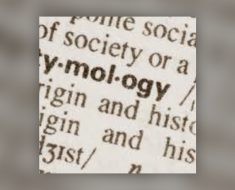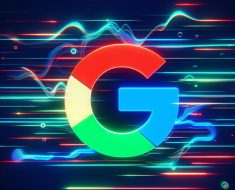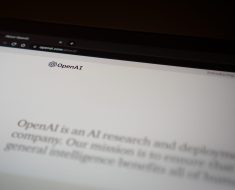Artificial Intelligence (AI) is becoming a key player in healthcare, with Natural Language Processing (NLP) helping to change how we approach medical diagnostics and patient care. As AI technologies continue to grow, a big question comes up: Can AI diagnose better than doctors? Let’s explore how NLP is used in healthcare and its potential to improve diagnostic accuracy and patient outcomes.
What is NLP and What Does It Do?


Natural Language Processing (NLP) is a part of AI that focuses on how computers and humans interact through language. It allows machines to understand, interpret, and generate human language in a way that’s useful. NLP combines elements from linguistics, computer science, and AI to process and analyze large amounts of language data. You can see NLP in action in things like speech recognition, sentiment analysis, and language translation².
In healthcare, NLP is especially helpful because it can handle unstructured data from clinical notes, electronic health records (EHRs), and patient feedback. By doing this, it helps healthcare providers extract important insights, streamline workflows, and make better decisions³.
The Role of NLP in Medical Diagnostics


NLP is making waves in medical diagnostics by enabling more accurate and timely identification of diseases. It can sift through tons of patient data to spot patterns and connections that might be missed by human eyes. For example, NLP can analyze clinical notes to identify symptoms, medical history, and other key information that helps doctors understand a patient’s condition better⁷.
One of the main ways NLP is used in diagnostics is through the analysis of EHRs. These records often contain unstructured text data that can be tough to interpret. NLP algorithms can go through this data to identify potential health issues, suggest possible diagnoses, and even recommend treatment options⁶. This helps reduce the risk of diagnostic errors and ensures patients get the right care at the right time⁵.
NLP vs. Human Clinicians in Diagnostics


The debate over whether AI, including NLP, can outperform human doctors in diagnostics is ongoing. Some studies have shown that AI systems can match or even exceed the diagnostic accuracy of human clinicians, especially in areas like medical imaging and pathology¹.
For instance, AI has shown great results in diagnosing conditions from radiology images and identifying patterns in complex datasets that might be overlooked by human experts¹. However, it’s important to remember that AI and NLP are not meant to replace human doctors. Instead, they are tools to support healthcare professionals. By handling routine tasks and analyzing data at scale, AI allows doctors to focus on more complex cases and patient interactions⁶. The combination of AI and human expertise can lead to better diagnostic outcomes and improved patient care⁷.
Challenges and Considerations


Despite its potential, using NLP in healthcare diagnostics comes with challenges. One big issue is the variability in data quality and the presence of biases in training datasets. These factors can affect the accuracy and reliability of NLP models⁵. Moreover, the ethical implications of AI in healthcare, such as patient privacy and data security, must be carefully managed⁴. Additionally, while AI can process data efficiently, it lacks the human touch that’s often crucial in-patient care. Empathy, intuition, and the ability to understand nuanced patient stories are areas where human clinicians excel⁸. Therefore, the goal should be to create a collaborative environment where AI supports doctors in delivering compassionate and effective care⁷.
Future Prospects of NLP in Healthcare


The future of NLP in healthcare looks promising, with ongoing advancements in AI technologies and increasing adoption across the industry. As NLP systems become more sophisticated, they will likely play a more integral role in diagnostics, treatment planning, and patient management⁶. The continuous improvement of NLP algorithms and the expansion of healthcare datasets will enhance the precision and scope of AI-driven diagnostics⁵. Moreover, NLP’s ability to process and analyze patient feedback can lead to more personalized and patient-centered care. By understanding patient sentiments and experiences, healthcare providers can tailor their services to meet individual needs and improve overall patient satisfaction⁷.
In conclusion, while AI and NLP are not yet ready to replace human doctors, they are indispensable tools that can greatly enhance diagnostic accuracy and efficiency. By leveraging the strengths of both AI and human expertise, the healthcare industry can achieve better outcomes and provide higher-quality care to patients worldwide¹.
Citations
1. “Artificial Intelligence Versus Clinicians in Disease Diagnosis.” NCBI, 16 Aug. 2019.
2. “Natural language processing.” Wikipedia.
3. “6 Uses for Natural Language Processing in Healthcare.” Hitachi Solutions.
4. “Leveraging Natural Language Processing (NLP) in Healthcare.” Intellias.
5. “Natural Language Processing in Healthcare Medical Records.” ForeSee Medical.
6. “How Natural Language Processing Is Helping Doctors Make Better Diagnoses.” John Snow Labs.
7. “Health Natural Language Processing: Methodology Development and Applications.” NCBI.
8. “Hitachi Solutions America and John Snow Labs Announce Strategic Partnership.” Hitachi Solutions.
Please note, that the author may have used some AI technology to create the content on this website. But please remember, this is a general disclaimer: the author can’t take the blame for any mistakes or missing info. All the content is aimed to be helpful and informative, but it’s provided ‘as is’ with no promises of being complete, accurate, or current. For more details and the full scope of this disclaimer, check out the disclaimer page on the website.





